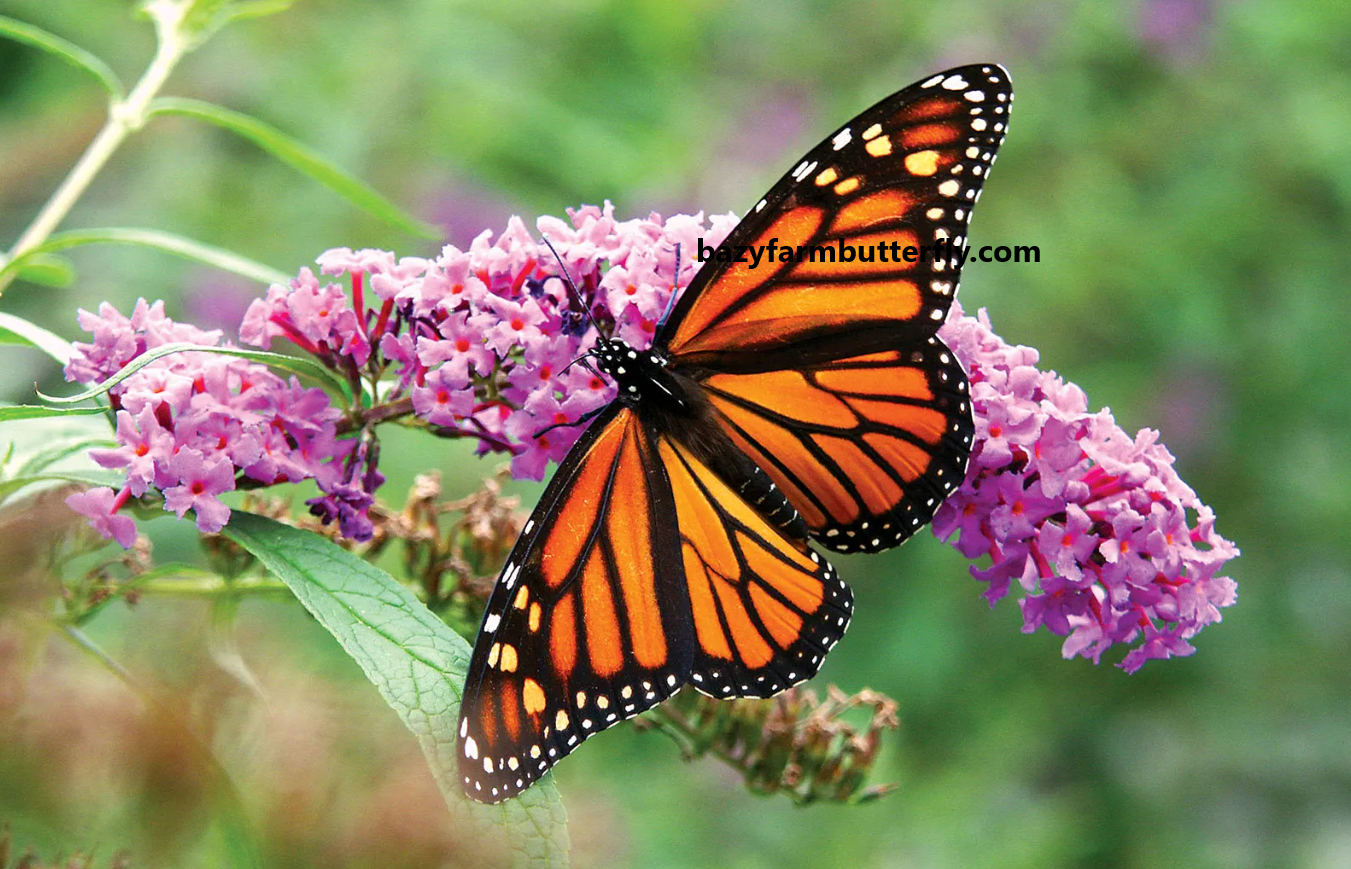Monarch butterflies are one of the most recognizable and beloved species of butterfly in the world. Their vibrant orange and black wings and their incredible annual migration make them a favorite among nature enthusiasts and casual observers alike. But to ensure these beautiful insects’ survival, it’s important to understand their life cycle and the habitat requirements they need to thrive. In this article, Bazy Farm will explore the diet of monarch caterpillars, the only food source for these young butterflies, and how important it is to their survival.
Understanding the Monarch Butterfly Life Cycle

Before we dive into the diet of monarch caterpillars, it’s important to understand the life cycle of the monarch butterfly. Monarch butterflies go through four distinct stages during their life cycle: the egg, larva (caterpillar), pupa (chrysalis), and adult (butterfly) stages. The adult female monarch butterfly lays her eggs on the underside of the leaves of the milkweed plant, which is the only plant that monarch caterpillars will eat.
Monarch Caterpillars’ Diet
Monarch caterpillars have a unique diet, and they only consume specific plants to survive. The primary food source for Monarch caterpillars is the milkweed plant. Monarchs lay their eggs on the milkweed leaves, and when the eggs hatch, the tiny caterpillars immediately start feeding on the leaves. Monarch caterpillars are the only species of caterpillars that can consume milkweed without being affected by its toxic sap.
Apart from milkweed, Monarch caterpillars may also feed on other plants such as swamp milkweed, whorled milkweed, and butterfly weed. However, the Monarch’s preference for milkweed makes it a crucial plant for its survival and growth.
Milkweed and Monarch Conservation
Due to the Monarch’s reliance on milkweed, conservation efforts are crucial to their survival. Unfortunately, the widespread use of herbicides and habitat destruction has significantly impacted milkweed populations, leading to a decline in Monarch butterfly populations. To help conserve Monarchs, you can plant milkweed in your backyard or community garden. By providing a food source for Monarch caterpillars, you can help ensure the survival of this beautiful species.
How Does Milkweed Affect Monarch Caterpillars’ Survival?
Milkweed is more than just a food source for monarch caterpillars. It also provides a natural defense against predators. When monarch caterpillars feed on milkweed, they accumulate toxic chemicals called cardiac glycosides in their bodies, which make them toxic and unpalatable to predators. This toxic defense mechanism stays with the butterfly throughout its life and protects it from predators.
Foods That Monarch Caterpillars Should Avoid

Avoid Feeding Monarch Caterpillars Pesticide-Contaminated Milkweed
Milkweed is the primary food source for Monarch caterpillars, but it’s important to avoid feeding them milkweed that has been contaminated with pesticides. Pesticides can be harmful to the caterpillars and can even kill them. Therefore, it’s crucial to ensure that the milkweed used to feed the caterpillars is pesticide-free.
Avoid Feeding Monarch Caterpillars Only Pumpkin
While pumpkins can be used as a partial alternative food source for older, larger caterpillars, they should not be the sole source of food. Pumpkin does not provide all the necessary nutrients that caterpillars need to properly develop. Therefore, it’s important to provide a variety of food sources to caterpillars, including milkweed and nectar flowers.
Avoid Feeding Monarch Caterpillars Inadequate Amounts of Food
Monarch caterpillars need a significant amount of food to transform into a butterfly. They increase their weight by 3,000 times from egg to chrysalis, which takes them around two weeks. Therefore, it’s essential to provide caterpillars with enough food to ensure proper development and a higher chance of survival.
Tips for Feeding Monarch Caterpillars

Feeding monarch caterpillars require special care and attention. Here are some essential tips to follow when feeding monarch caterpillars:
Use pesticide-free plants
Using pesticide-free plants such as milkweed and other plants that monarch caterpillars can consume is crucial to avoid poisoning the caterpillars.
Replace the milkweed leaves regularly
Monarch caterpillars are voracious eaters, so you must replace the milkweed leaves regularly to ensure they have enough food.
Keep the container clean
Keeping the container clean is essential to prevent the growth of bacteria and other harmful microorganisms that can harm the caterpillars.
Provide enough space
Monarch caterpillars need enough space to move around, so make sure the container you use to raise them is big enough to accommodate them.
Keep the container away from direct sunlight
Direct sunlight can heat up the container, harming the caterpillars, so it is essential to keep the container away from direct sunlight.
How Much Milkweed Do Monarch Caterpillars Need?
Monarch caterpillars have a voracious appetite and require a lot of milkweed to fuel their rapid growth. According to the search results, a single monarch caterpillar can consume up to 200 times its weight in milkweed before it pupates. That means a single caterpillar can eat an entire milkweed plant in just a few days. As a result, it’s essential to plant plenty of milkweeds if you want to attract and support monarch caterpillars in your garden.
Conclusion
Monarch caterpillars feed exclusively on milkweed, which is essential to their survival. Other plants from the Asclepias family can also be consumed by the caterpillars. It is crucial to plant milkweed and other pesticide-free plants to help conserve monarch butterflies. Additionally, feeding monarch caterpillars require special care and attention, and following essential tips can help ensure a high survival rate for monarch butterflies.
>>> Read more: Top 10 Most Beautiful Butterfly Species

